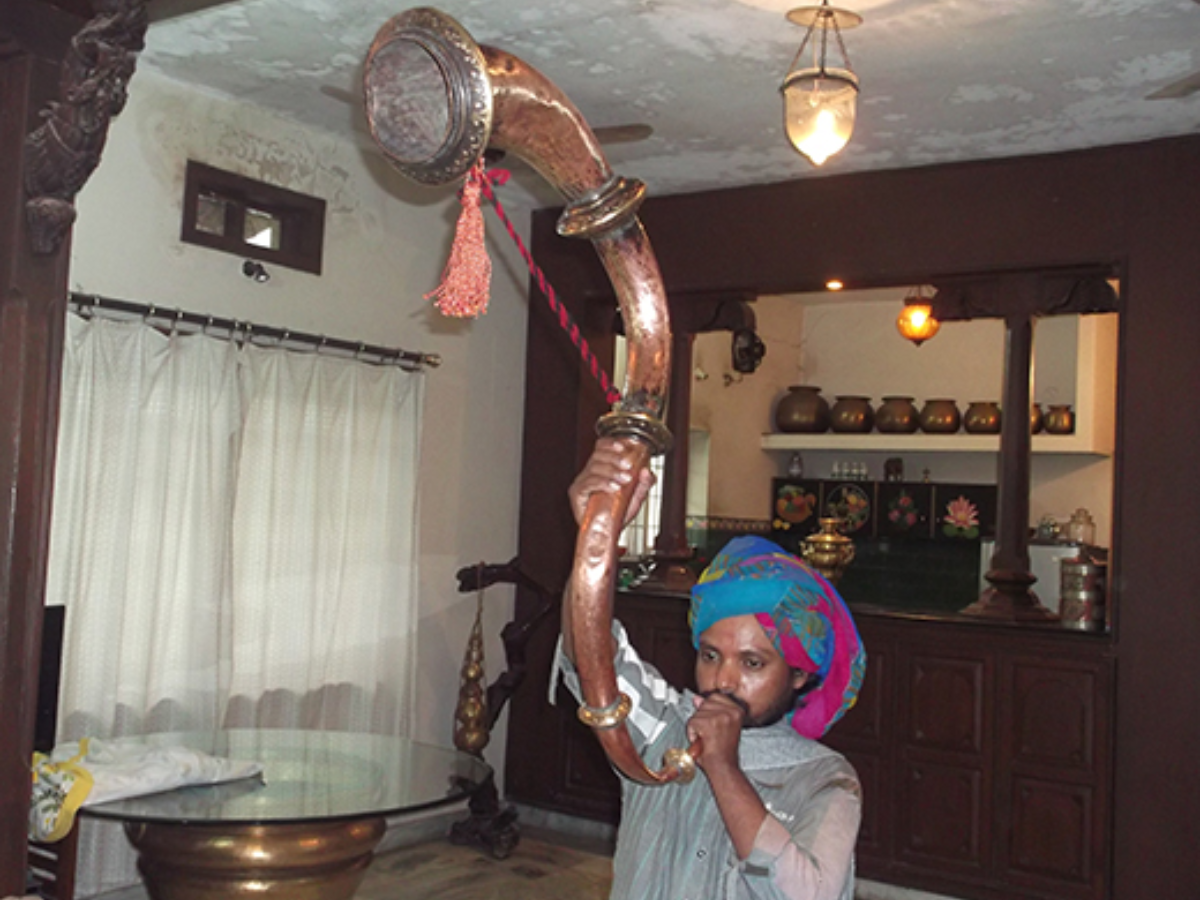State
Tribe Name
Art Type
short description
Himachal Pradesh's musical instrument Nasingha, presents a uniqueness about the cultural heritage of the region. Made of copper and metal, the instrument acts in social ceremonies, folk music, and dance across various communities of the state. Especially among the pastoral Gaddi and Chamba tribes, the Gaddi people have extensively used the Narsingha in their traditional rituals and dances.
Thumbnail

Filter Postion
Left
Filter Background
Off
Theme
Filter Header Image

content
Image

description
Himachal Pradesh's musical instrument Nasingha, presents a uniqueness about the cultural heritage of the region. Made of copper and metal, the instrument acts in social ceremonies, folk music, and dance across various communities of the state. Especially among the pastoral Gaddi and Chamba tribes, the Gaddi people have extensively used the Narsingha in their traditional rituals and dances.
The Narsingha consists of a three-bent copper tube which takes an S-shape, hence acquiring its characteristic curved design. The instrumentation envisages its funnel-shaped opening at one end to let out the sound, while its mouthpiece integrated at the other end aims at the mouth of the musician for playing. This design is paramount for generating the deep resounding sound of the instrument that travels to long distances, thus being highly suitable for ceremonial and festive occasions. The five raised metal rings fixed around the tube serve as ornamental features of the instrument; the specific engagement of the rings with the tube tune the aesthetic and the acoustic properties of the instrument.
Traditionally, the Narsingha is played during the major festivals, dances, and community celebrations, wherein it plays a major part in the orchestration of folk music. The instrument's guttural and deep sounds often express the tribe's connection with spirituality and earth, demonstrating the Gaddi tribe's acknowledgment and veneration of nature and their ancestral traditions.
The Narsingha consists of a three-bent copper tube which takes an S-shape, hence acquiring its characteristic curved design. The instrumentation envisages its funnel-shaped opening at one end to let out the sound, while its mouthpiece integrated at the other end aims at the mouth of the musician for playing. This design is paramount for generating the deep resounding sound of the instrument that travels to long distances, thus being highly suitable for ceremonial and festive occasions. The five raised metal rings fixed around the tube serve as ornamental features of the instrument; the specific engagement of the rings with the tube tune the aesthetic and the acoustic properties of the instrument.
Traditionally, the Narsingha is played during the major festivals, dances, and community celebrations, wherein it plays a major part in the orchestration of folk music. The instrument's guttural and deep sounds often express the tribe's connection with spirituality and earth, demonstrating the Gaddi tribe's acknowledgment and veneration of nature and their ancestral traditions.
Image Mode
landscape
promoted
On
Verified
Off
